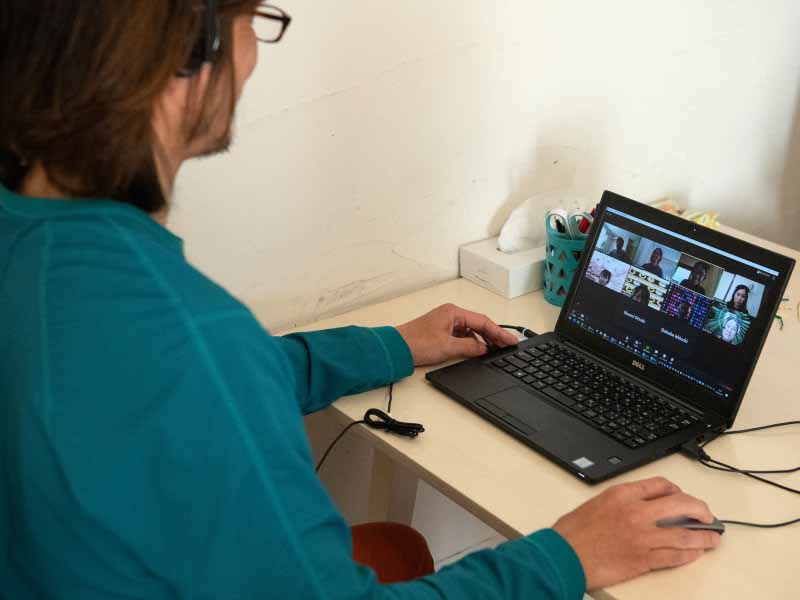How companies are supporting employees during COVID-19
Organizations launch programs that address mental, physical, and emotional health
The sudden onset of the largest work-from-home experiment of all time has altered work environments in ways unimaginable just a few months ago.
Beyond the technological adjustments to online meetings and video calls, people are struggling with isolation and uncertainty, childcare responsibilities, or even grief.
In response, organizations are creating wellness programs, relief funds and a host of other initiatives to support employees amid the coronavirus pandemic.
“For many companies, the first step was transitioning employees to the work-from-home environment,” says Bernice Boucher, Managing Director, JLL Consulting. “Once that is in a good place, supporting employees’ emotional, physical and mental wellbeing is the hot button topic.”
Resources and well-being programs
Companies are giving employees access to resources that range from counseling services to financial aid.
Workday, a California-based IT firm, announced it would provide the majority of its workers the equivalent of two-weeks’ pay to cover costs resulting from having to work from home. A relief fund was established to help those in need of additional support, such as people whose family members contracted COVID-19. The company also increased the number of days offered in its benefits program with childcare provider Care.com.
The Bank of Ireland increased employee access to its wellness program, which includes an app with online seminars and interactive courses on mental, physical, and financial health from a celebrity wellness expert.
“Companies are leaning on their HR departments to communicate the services that can help, many of which might already exist as part of their benefits package,” says Boucher.
JLL created an online portal of company resources to guide employees’ mental, physical and financial health, and foster their sense of belonging. It includes webinars that address coping with the current challenges and free access to the meditation app Headspace.
“We took all the resources and training that existed across the company and put it in one place so it’s easy to find and use,” says Angela Geffre, Head of Global Talent at JLL. “We also created new content, including a webinar series and virtual playlists to help direct our people to critical training and videos about keeping their bodies and minds healthy.”
Surveys can be an effective tool for monitoring the emotional well-being of workers on an ongoing basis, says Katie Rodrigues, Senior Vice President of Consulting at JLL. The results can then be used to inform actionable solutions.
“One client in the tech industry sent surveys to its employees around the globe asking about the specific barriers they were experiencing while working from home,” Rodrigues says. “The results are helping the company shape its support plan, from providing stipends for childcare to free access to meditation apps.”
Communication from leaders
Whether it's uncertainty about job status or uneasy feelings around ultimately returning to the physical workplace, employees are experiencing stress from all angles. To help put workers at ease, company leaders should provide as much information as possible, says Gina Payne, Vice President of Change Management at JLL.
“Having a source of truth is really important,” says Payne. “Your people need to know when to expect updates and who to pay attention to. The anxiety is around the unknowing.”
The management level is where a lot of the rubber hits the road, both in terms of giving day-to-day direction and providing emotional support. It’s important to talk to employees about how they are doing more broadly, in addition to what challenges are arising in the work-from-home environment. Payne suggests companies offer training for managers to learn how to work with a distributive team and foster open communication.
“Employees are often fearful that they won't live up to their own expectations, and boundary setting is harder when there is no physical barrier between work and home,” Payne says. “It’s important to encourage employees to care for themselves. These are great times to show empathy, but also encouragement and flexibility, because everyone isn’t going to respond in the same way to this pandemic.”
Virtual meetings and teambuilding activities
Translating community and culture programs from the physical environment to the remote workplace can go a long way to forge healthy bonds.
Companies everywhere are hosting virtual versions of all-hands meetings or non-work events like happy hours. With kids and pets becoming an increasingly common facet of daily work life, many employers are embracing their presence.
Technology company HP encouraged parents working remotely in Singapore to take an active role in their children’s learning, offering employees access to online resources that include weekly literacy activities curated by education leaders. Goodway Group, a Pennsylvania-based digital ad agency, hosts “Family Fun Fridays” for employees with kids, featuring music and magic shows. The New York Times advertising department held a virtual pet parade.
“A friend of mine told me about their company-wide happy hour, called ‘Spirit Hour,’ which I assume has the double meaning of lifting everyone’s spirits,” Payne says. “500 employees showed up on this virtual platform. Everyone was invited. This is exactly the sort of thing we are advising for our clients.”




